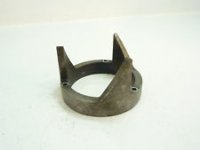Theteacher
Plastic
- Joined
- Mar 3, 2017
Follow along with the video below to see how to install our site as a web app on your home screen.
Note: This feature may not be available in some browsers.
Thanks for the replies!
This would be use as snowmobile secondary clutch rollers. Materiel needs to be impact/shock resitant and machinibility (turned, reamed and drilled. It wont see any high temps. So would Micarta be a good choice?



My 1969 Volvo had a steel pinion and a phenolic gear to drive the camshaft. I had two of the gears shed teeth while I was driving the car, which is how I got to see what the gears were made of.
Larry
Thanks for the replies!
This would be use as snowmobile secondary clutch rollers. Materiel needs to be impact/shock resitant and machinibility (turned, reamed and drilled. It wont see any high temps. So would Micarta be a good choice?
Notice
This website or its third-party tools process personal data (e.g. browsing data or IP addresses) and use cookies or other identifiers, which are necessary for its functioning and required to achieve the purposes illustrated in the cookie policy. To learn more, please refer to the cookie policy. In case of sale of your personal information, you may opt out by sending us an email via our Contact Us page. To find out more about the categories of personal information collected and the purposes for which such information will be used, please refer to our privacy policy. You accept the use of cookies or other identifiers by closing or dismissing this notice, by scrolling this page, by clicking a link or button or by continuing to browse otherwise.
